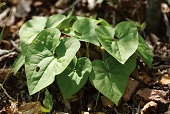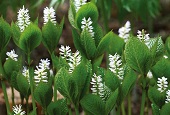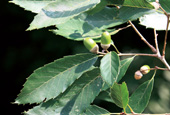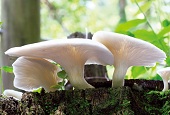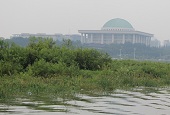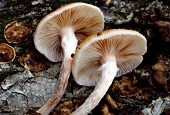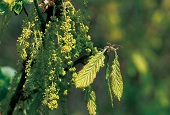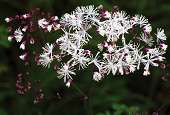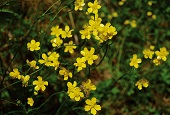View this article in another language
- 한국어
- English
- 日本語
- 中文
- العربية
- Español
- Français
- Deutsch
- Pусский
- Tiếng Việt
- Indonesian
Flora & Fauna of Korea #39
Korea.net publishes a series of articles, “Nature You Meet in the Mountains,” about the peninsula’s mushrooms, insects, trees and herbs & flowers.
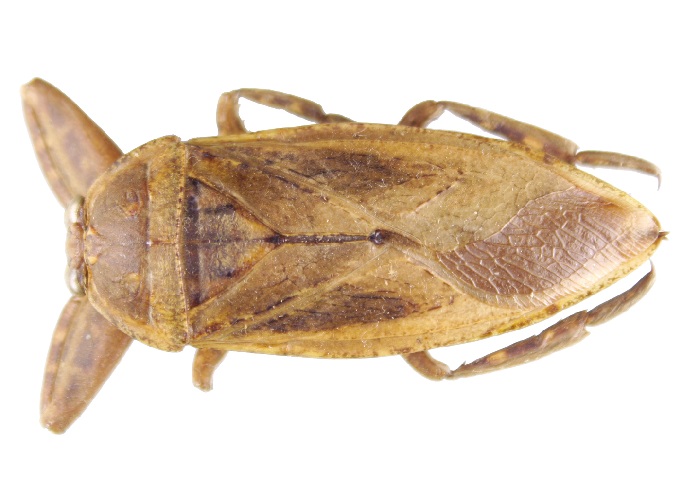
Insects
Name: 물장군 Muljanggun
Scientific name: Lethocerus deyrollei (Vuillefroy)
Distribution: Korea, China, Japan, Taiwan and India
This water bug is about 48 to 65 millimeters long. It's known as the largest in its family. It is brown and the head is relatively small. The antenna are under its compound eyes, not exposed on the body. It has a "toenail" on its fore legs, used for hunting. The middle and hind legs are used for swimming. The knuckles in the thighs and on the toes are covered in long hairs. It has a breathing organism at the tip of the tail.
Ecology: Adults appear from May to September. It's known to inhabit rivers, wetlands and places with stagnant water. It lives by sucking the bodily fluids of tadpoles, frogs and tiny fish.
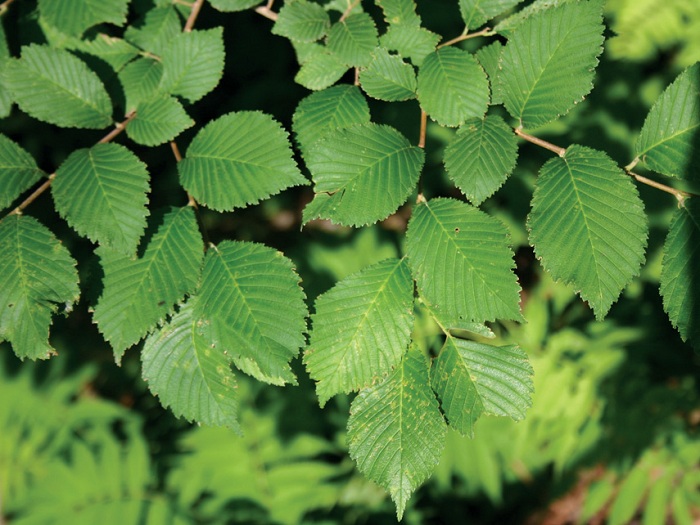
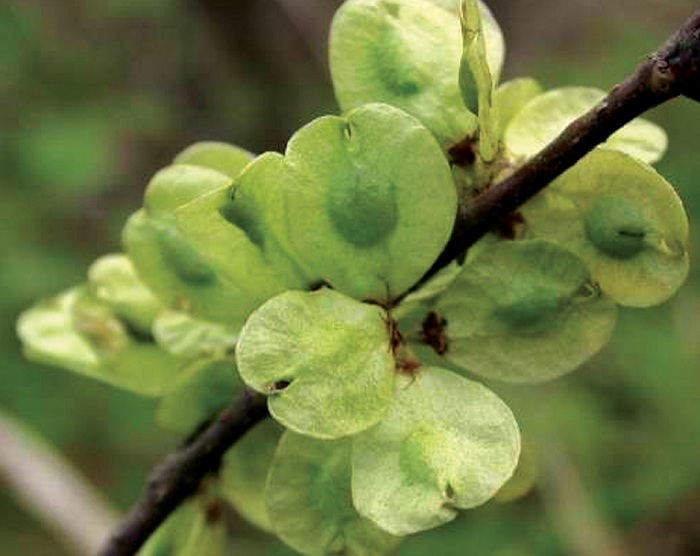
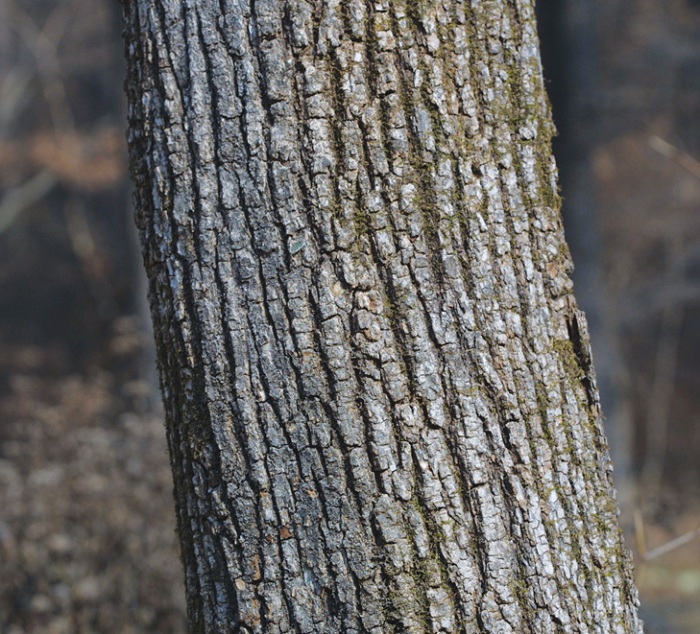
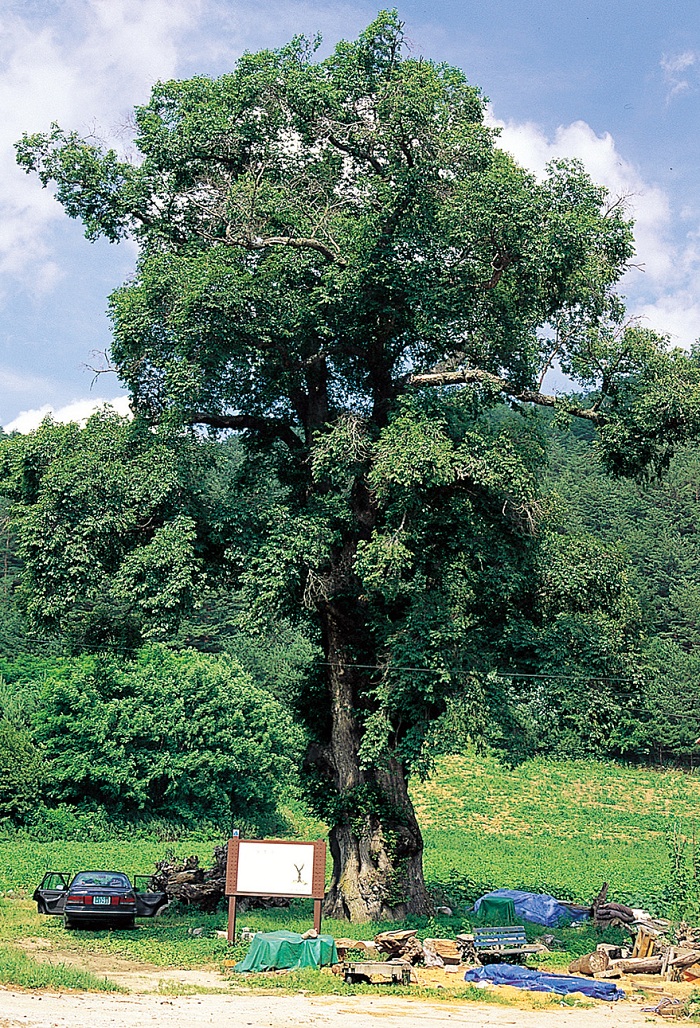
Trees
Name: 느릅나무 Neureupnamu
Scientific name: Ulmus davidiana var. japonica (Rehder) Nakai
Type: deciduous broadleaf tree
Blooming season: April to May
Bearing season: May
Distribution: mountains nationwide
This tree grows to a height of 30 meters and can be 1-meter around. The bark is brown. It can crack lengthwise. The leaves are alternating, ovate, oblique and it has leaves with an acute tip. The underside has hairs along the vein. The flowers bloom before the leaves grow. It normally has 7 to 15 leaves grown from the leaf axil. It bears key fruit without hair.
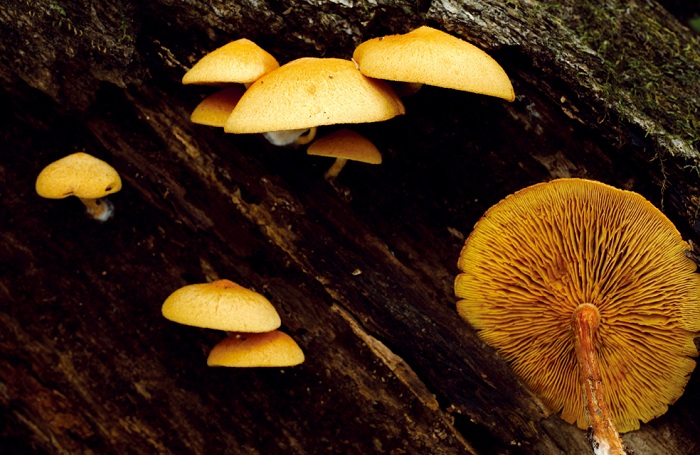
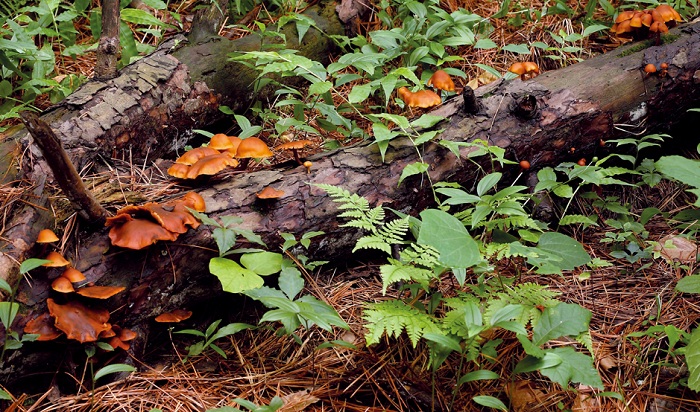
Mushrooms
Name: 솔미치광이버섯 Solmichigwangi beoseot
Scientific name: Gymnopilus liquiritiae (Pers.) P. Karst.
Type: saprophile spore
Print: brown
Dangerous to eat
This mushroom grows in clusters from old and fallen needle trees. The cap is about 1.5 to 4 centimeters high. It is bell-shaped at first, becomes semi-spherical and gradually flattens. The surface is wide and flat, yellowish brown and develops radial lines with age. The pleats are stick closely to the cap, are densely arranged and are yellow or yellowish brown. The stipe is about 2 to 5 centimeters long and 2 to 4 millimeters wide. The inside is empty and fibrous.
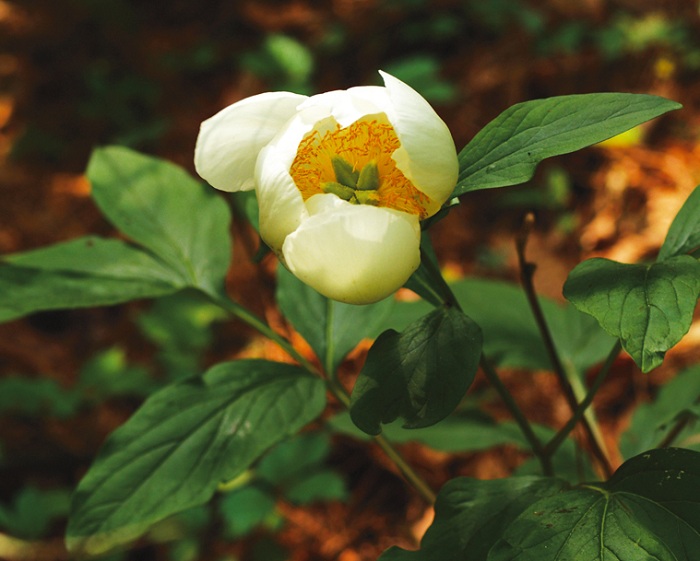
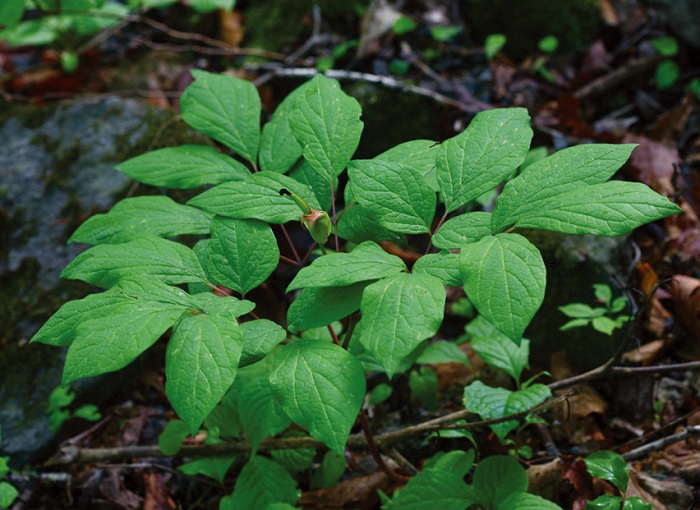
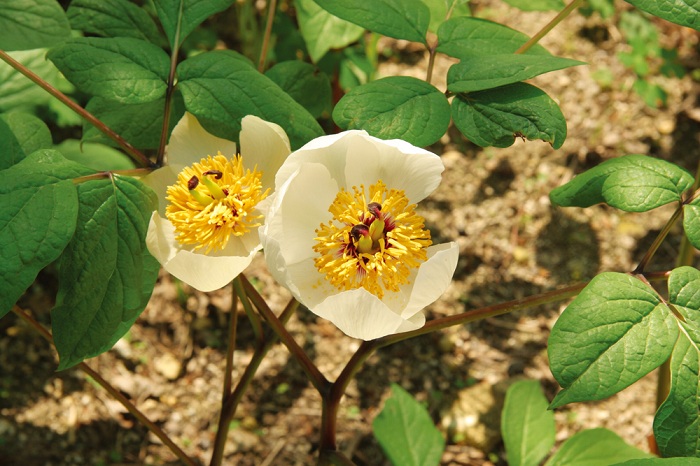
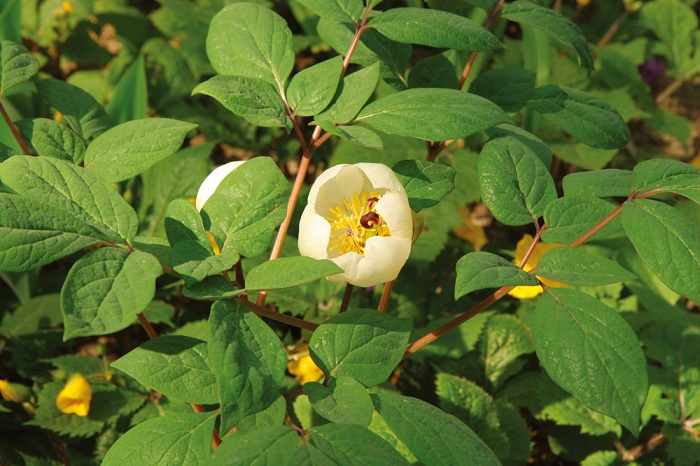
Herbs & Flowers
Name: 백작약 Baekjakyak
Scientific name: Paeonia japonica (Makino) Miyabe & Takeda
Blooming season: June
Distribution: mountains nationwide
This perennial grows to a height of 40 to 50 centimeters on average. It develops tuberous roots, and some branches grow from the thick and robust roots. It has two trifoliolate leaves that are alternating, ovate and flat in the center. It gives bloom to a white flower grown from the main culm. Each flower has five to seven petals. It bears a dehiscent fruit that is oval-shaped and becomes red when it opens.
*This series of article about Korea’s insects, trees, mushrooms and herbs & flowers has been made possible through the cooperation of the Korea National Arboretum.
Korea.net publishes a series of articles, “Nature You Meet in the Mountains,” about the peninsula’s mushrooms, insects, trees and herbs & flowers.

Insects
Name: 물장군 Muljanggun
Scientific name: Lethocerus deyrollei (Vuillefroy)
Distribution: Korea, China, Japan, Taiwan and India
This water bug is about 48 to 65 millimeters long. It's known as the largest in its family. It is brown and the head is relatively small. The antenna are under its compound eyes, not exposed on the body. It has a "toenail" on its fore legs, used for hunting. The middle and hind legs are used for swimming. The knuckles in the thighs and on the toes are covered in long hairs. It has a breathing organism at the tip of the tail.
Ecology: Adults appear from May to September. It's known to inhabit rivers, wetlands and places with stagnant water. It lives by sucking the bodily fluids of tadpoles, frogs and tiny fish.




Trees
Name: 느릅나무 Neureupnamu
Scientific name: Ulmus davidiana var. japonica (Rehder) Nakai
Type: deciduous broadleaf tree
Blooming season: April to May
Bearing season: May
Distribution: mountains nationwide
This tree grows to a height of 30 meters and can be 1-meter around. The bark is brown. It can crack lengthwise. The leaves are alternating, ovate, oblique and it has leaves with an acute tip. The underside has hairs along the vein. The flowers bloom before the leaves grow. It normally has 7 to 15 leaves grown from the leaf axil. It bears key fruit without hair.


Mushrooms
Name: 솔미치광이버섯 Solmichigwangi beoseot
Scientific name: Gymnopilus liquiritiae (Pers.) P. Karst.
Type: saprophile spore
Print: brown
Dangerous to eat
This mushroom grows in clusters from old and fallen needle trees. The cap is about 1.5 to 4 centimeters high. It is bell-shaped at first, becomes semi-spherical and gradually flattens. The surface is wide and flat, yellowish brown and develops radial lines with age. The pleats are stick closely to the cap, are densely arranged and are yellow or yellowish brown. The stipe is about 2 to 5 centimeters long and 2 to 4 millimeters wide. The inside is empty and fibrous.




Herbs & Flowers
Name: 백작약 Baekjakyak
Scientific name: Paeonia japonica (Makino) Miyabe & Takeda
Blooming season: June
Distribution: mountains nationwide
This perennial grows to a height of 40 to 50 centimeters on average. It develops tuberous roots, and some branches grow from the thick and robust roots. It has two trifoliolate leaves that are alternating, ovate and flat in the center. It gives bloom to a white flower grown from the main culm. Each flower has five to seven petals. It bears a dehiscent fruit that is oval-shaped and becomes red when it opens.
*This series of article about Korea’s insects, trees, mushrooms and herbs & flowers has been made possible through the cooperation of the Korea National Arboretum.
